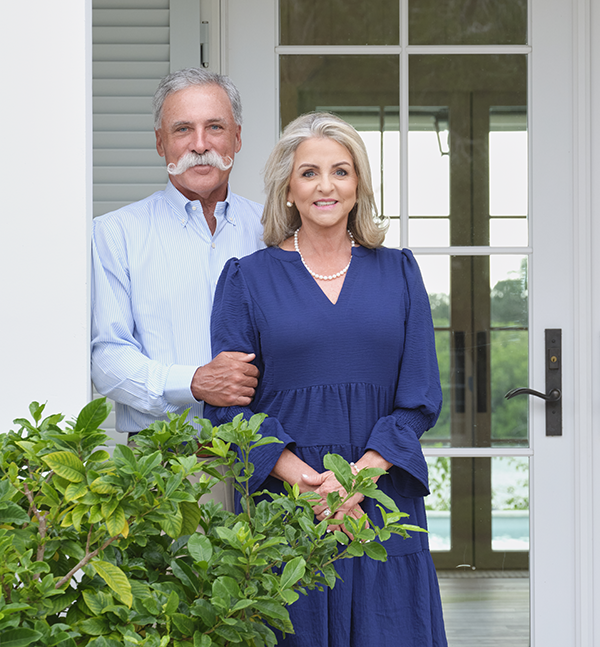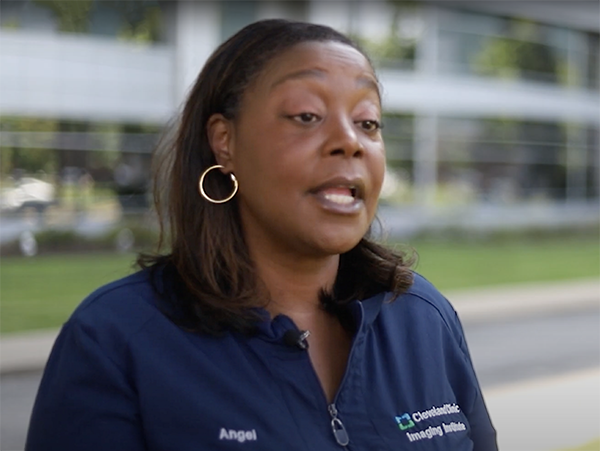Couple’s Gift Jumpstarts Fundraising at Indian River Hospital

Vero Beach residents Chase and Wendy Carey have donated $5 million to Cleveland Clinic Indian River Hospital to support the renovation of the hospital’s Emergency Department (ED). They hope their gift provides the spark that encourages others to contribute and help elevate patient care for the community they now call home.
“Cleveland Clinic is the centerpiece for quality healthcare in the area,” says Mr. Carey, a former President of FOX and CEO of Formula One. “We know there is an urgent need to expand the emergency department to improve access to that care, and Wendy and I want to help make that happen.”
Supporting the community
The Careys have resided in many communities during their 38 years of marriage. No matter where they call home, they strive to support the community and help make it better.
“Vero Beach is a wonderful place and so are the people,” says Mrs. Carey. “It’s a privilege to do our part for everyone who lives here.”
Since establishing a home in Vero Beach five years ago, they have been supporting a number of local organizations that promote education and healthcare access, from The Learning Alliance and John’s Island Foundation to The Boys and Girls Club and United Way.
“My father and four of my siblings are doctors,” notes Mrs. Carey, who had a career in nursing before raising the couple’s two children. “I know how important it is to provide healthcare professionals with the resources they need to deliver the best care. That’s why Chase and I are proud to support Cleveland Clinic.”
This is the Careys first major gift to Cleveland Clinic and marks their membership in the 1921 Society, which recognizes donors who give $1 million or more.
“We are grateful for Chase and Wendy’s generous support,” says Holly Mantle, DNP, RN, CENP, Director of the Emergency Department and Critical Care Services at Cleveland Clinic Indian River Hospital. “The ED is an essential part of the hospital and an important community resource.”
A vital resource
Indian River County is one of the fastest growing counties in Florida, and the 34-bed ED at Indian River Hospital sees the most patients of any Cleveland Clinic facility in Florida.
“We had more than 56,000 ED visits in 2022,” says Mantle. “Fully 80% of our admissions comes through the Emergency Department, making it the hospital’s front door.”
She also notes that the complexity of patient care has increased dramatically in the four years since Indian River Hospital joined Cleveland Clinic’s global enterprise. “An expansion of our emergency care spaces will help our exceptional team better serve the residents of Indian River, a community experiencing explosive growth,” Mantle says.
More than curb appeal
The current ED space does not meet the patient volume, and space inefficiencies contribute to longer wait times for patients. “The ED is simply too small and outdated. I’ve got the team that I need but not the space,” says Mantle.
The goal of the ED renovation is to elevate the patient experience, minimize waiting times, and improve the overall flow of care.
Preliminary plans call for repurposing an adjacent area that is roughly the size of the existing ED. The new space will host a Flex Care Unit designed to support patients with serious but non-life-threatening conditions, while the updated ED space will continue to serve patients with life-threatening conditions.
How you can help
Philanthropic support is needed to put the ED renovation plan into motion and make an immediate improvement to patient care.
“Wendy and I have been very fortunate to only need the preventative health services of Cleveland Clinic,” adds Mr. Carey. “But we recognize how important access to quality emergency care is for the community, which is why we are advocating for this renovation and hope others will join us.”
Aromatherapy is Helping to Ease MRI Patient Anxiety

Angel Houston, a cardiac MRI technologist at Cleveland Clinic, remembers the tears. The emotion. The relief.
She remembers the patients — men and women alike — emerging from the scanner overcome, not with fear or uncertainty, but gratitude.
“I couldn’t have done this without you,” they would say to her.
For some, getting an MRI can be an experience fraught with tension, but Angel has been a steady, calming presence for many years, easing their concerns.
This sense of compassion and empathy has guided her work, leading her to adopt a more holistic approach in making the exam experience free from any potential anxiety.
That’s why — thanks to a Catalyst Grant — she’s conducting a study to test the effectiveness of aromatherapy during cardiac MRIs for calming patients instead of traditional medication. It’s a strategy she’s used on patients (with the approval of management, of course) the past 16 years after she personally discovered its soothing effects. This study, however, could take what’s worked for her and make it a practice throughout radiology and possibly endoscopy, breast imaging and angiography at Cleveland Clinic. In January, she’ll present her preliminary findings at the Society of Cardiac Magnetic Resonance’s global conference in London. And a video about her use of aromatherapy during MRIs has been featured on local news stations.
What Unlocked Her Passion
This is personal for Angel.
When her brother was diagnosed with cancer, she watched how, in some ways, he lost control of his choices because of the unintended effects of his medication. And as an MRI tech, she often sees similarities with those coming in for exams.
“Any opportunity to help other patients, like my brother, to maintain their dignity and sense of control on their healthcare pathway can have a profound impact in such a time of deep uncertainty,” she said.
The premise of Angel’s study is simple, but its promise carries the potential to transform the exam experience for both patients and medical professionals.
How Medication Can Potentially Impede Proper Diagnoses
While traditional medications have benefits and can be effective in relaxing patients, there are drawbacks. For one, patients are often so sedated, they fall asleep. That doesn’t help when MRI techs need to walk them through a series of rounds where they hold their breath. Sometimes the test is prolonged, requiring alternative techniques to acquire usable images, which are needed to accurately diagnose problems.
Angel considers her role a crucial link in uncovering what might be the mysterious causes of illness. It’s what drew her to radiology and imaging almost three decades ago. So she’s dedicated to her exam patients. They need answers and clear, easily readable images often hold the key.
The use of medication during MRIs also requires constant monitoring. Nurses must ensure that patients respond appropriately to any medication before and after the exam. But lavender is all natural and unlikely to trigger any adverse reactions, reducing the need for nurse oversight and allowing caregivers to work elsewhere.
The Benefits of Aromatherapy
When patients are offered and accept aromatherapy as a relaxation method, they are alert the entire time, but at ease. Lavender, for instance, is used because it is both safe and effective in reducing serotonin. It also has been shown to reduce stress and anxiety, along with heart rate and blood pressure.
Angel uses a series of breathing and relaxation strategies in tandem with her lavender treatment. It’s a combo that both doctors and patients alike have praised in its effectiveness.
Angel hopes to replicate the results many times over throughout the course of the study to demonstrate that aromatherapy can reduce patient stress, while simultaneously improving MRI image quality and reducing the need for nurse involvement.
A Journey that Began Nearly 30 Years Ago
Angel started in food service at Cleveland Clinic when she was 19. At the time, it was a job close to home. But she had a love for patient care and an innate curiosity, so she went to school to become an X-ray tech. Some 28 years later, she has a hard time wrapping her mind around where she is today, leading a study that could have long-lasting effects at the hospital.
Nonetheless, she’s immensely grateful. “It’s such a blessing; it’s such an honor; it’s just unbelievable,” she said.
Deborah Kwon, MD, Director of Cardiac MRI, guided, mentored and encouraged Angel to apply for a Catalyst Grant.
“She was the driving force behind this study,” Angel said. “Without her, this would not have been possible. I am so grateful for her being able to see the vision.”
Ultimately, she’s grateful for the times she’s been able to help so many patients. “You can’t get everyone through [the exams],” she said. “But the ones you can get through — that’s a game changer.”
About Catalyst Grants
At Cleveland Clinic, we call our employees caregivers.
At every level of interaction, they are — in their own way — responsible for seeing to our patients’ best interests. And because of that, many of them are always on the lookout to refine processes, create lasting change and improve the quality of care at the Clinic.
Twice a year, caregivers throughout Cleveland Clinic apply for a Catalyst Grant to fund one of their ideas up to $100,000. And that’s where our donors come in — providing 100% of that support. There’s no overhead, no administrative costs. Every dollar is spent directly on each of our caregivers’ projects.
So the more our donors give, the more ideas we can support. Talk about making a difference.
If you’re interested in contributing to breakthrough and discovery, give today.

